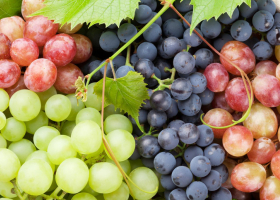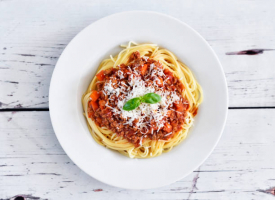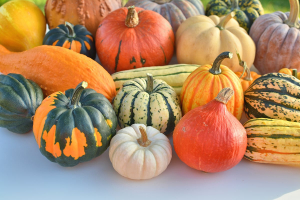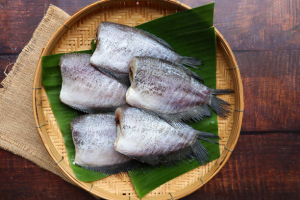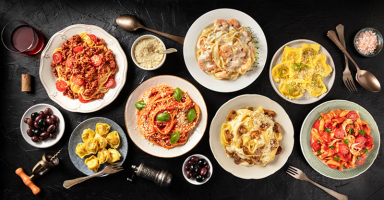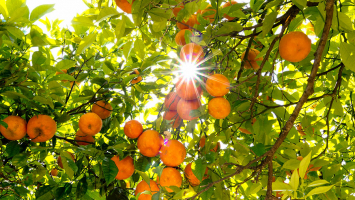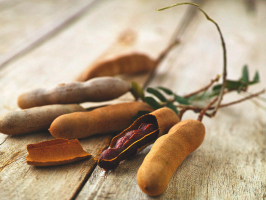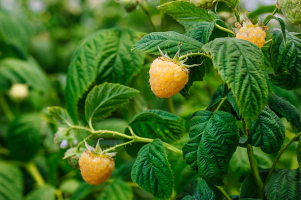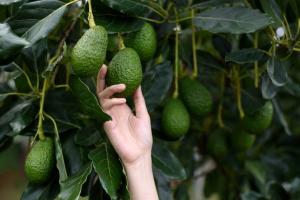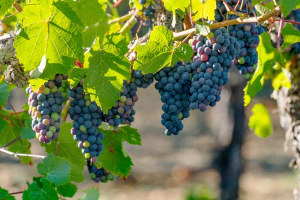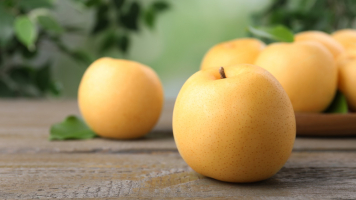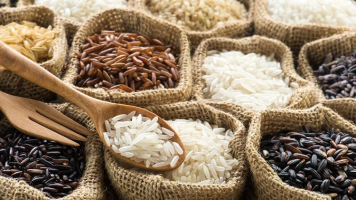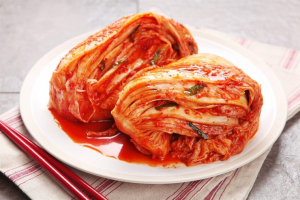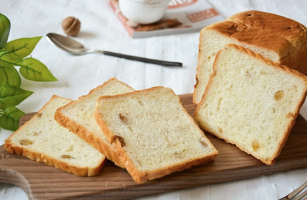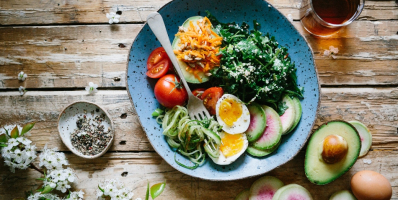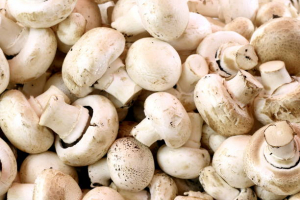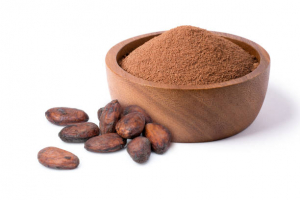Top 10 Most Delicious Types of Red Fruits
Red fruit always creates an eye-catching and delicious feeling even if you have not tried it. In addition to having a beautiful color, these red fruits also ... read more...have many nutrients that are beneficial for health. Below are the most delicious types of red fruits, let's find out!
-
The garden strawberry (or simply strawberry) is a widely grown hybrid species of the genus Fragaria. The fruit's distinctive aroma, vivid red color, juicy texture, and sweetness are all well-liked characteristics. Both fresh and prepared delicacies including jam, juice, pies, ice cream, milkshakes, and chocolates are consumed in great amounts. A lot of products, including confectionery, soap, lip gloss, perfume, and many others, contain artificial strawberry flavorings and fragrances.
Strawberries are often grouped according to their flowering habit. Traditionally, this has consisted of a division between "June-bearing" strawberries, which bear their fruit in the early summer, and "ever-bearing" strawberries, which often bear several crops of fruit throughout the season. One plant throughout a season may produce 50 to 60 times or roughly once every three days. Raw strawberries are 91% water, 8% carbohydrates, 1% protein, and contain negligible fat. A 100-gram reference amount of strawberries supplies 33 kilocalories, is a rich source of vitamin C (71% of the Daily Value, DV), is a good source of manganese (18% DV), and provides several other vitamins and dietary minerals in small amounts.
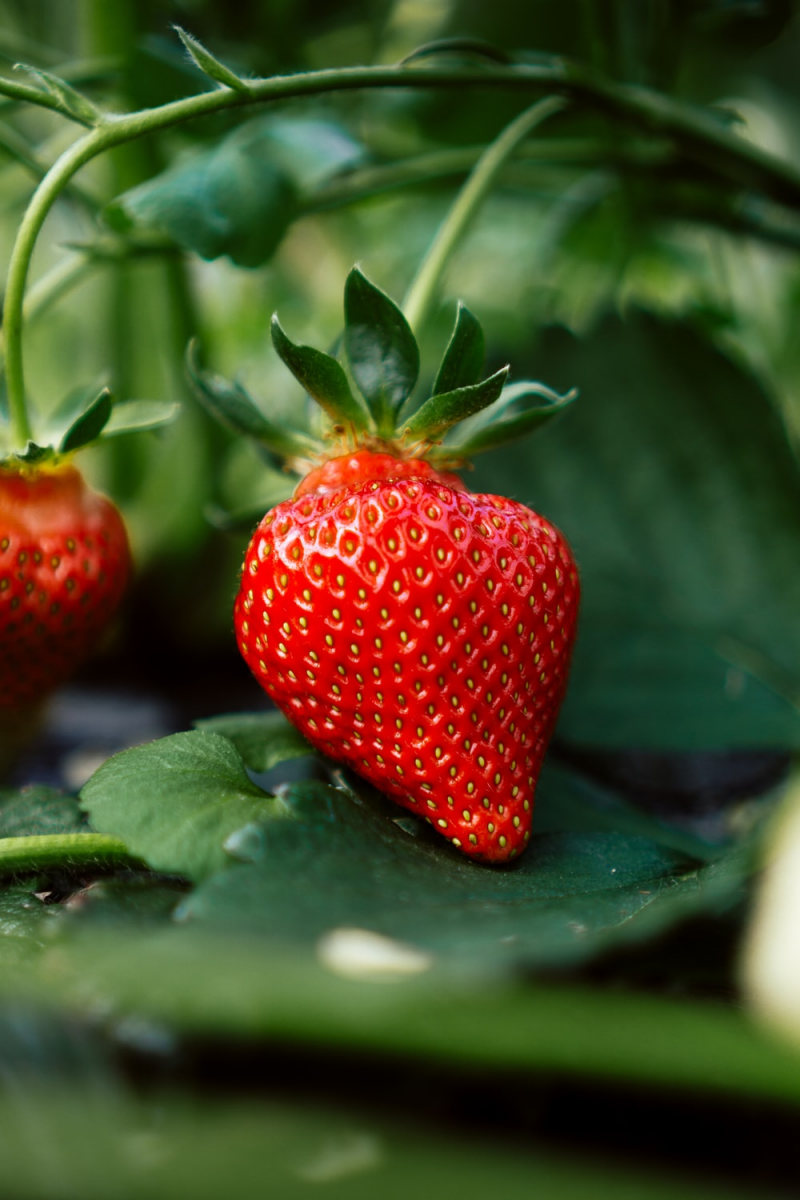
Unsplash 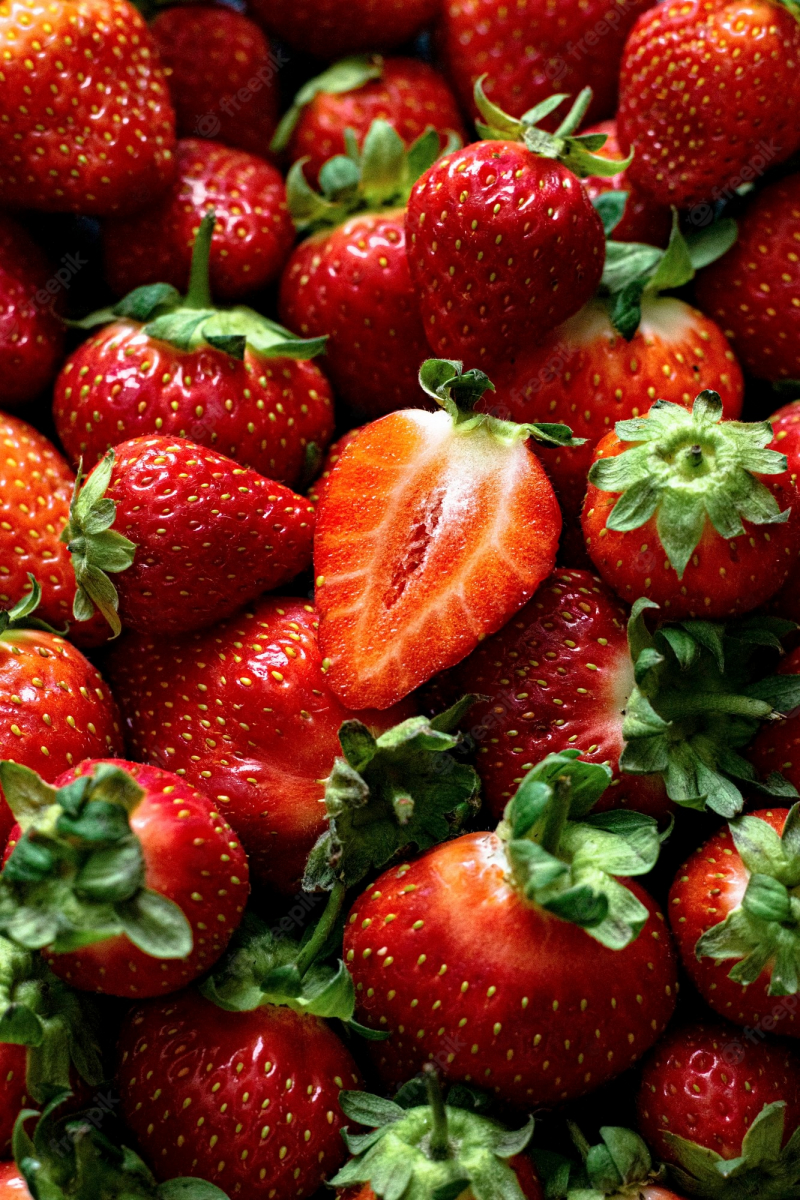
Freepik -
The raspberry is the edible fruit of a multitude of plant species in the genus Rubus of the rose family, most of which are in the subgenus Idaeobatus. Raspberries are perennial with woody stems. World production of raspberries in 2020 was 895,771 tonnes, led by Russia with 20% of the total. Raspberries are cultivated for the fresh fruit market as well as for industrial processing into individually fast frozen (IQF) fruit, purée, juice, or dried fruit used in a range of food products, including raspberry pie.
An individual raspberry weighs 3–5 g and is made up of around 100 drupelets, each of which consists of a juicy pulp and a single central seed. A raspberry bush can yield several hundred berries a year. Raspberries require plenty of sunlight and moisture for optimum growth. Raspberries grow best on soil that drains well, has a pH between 6 and 7, and has a lot of organic matter to help retain moisture. Although moisture is necessary, heavy, wet soils or excessive irrigation can cause Phytophthora root rot, one of the most serious pest issues the red raspberry faces.
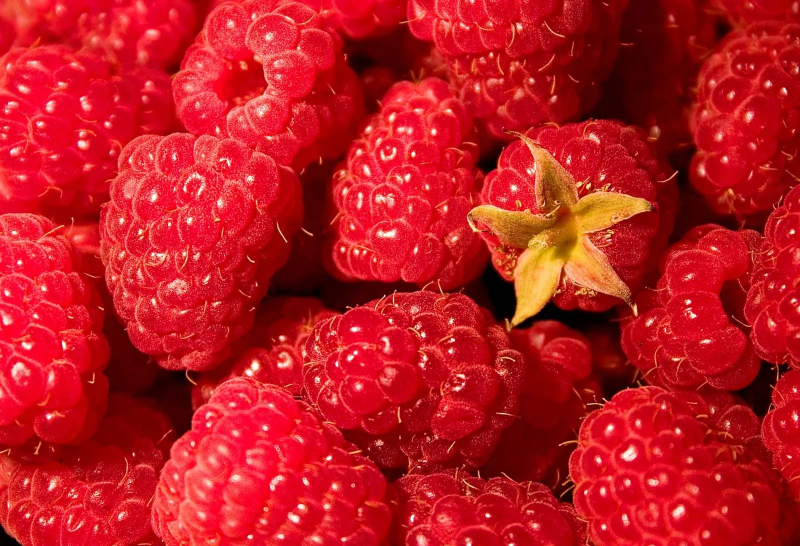
Encyclopedia Britannica 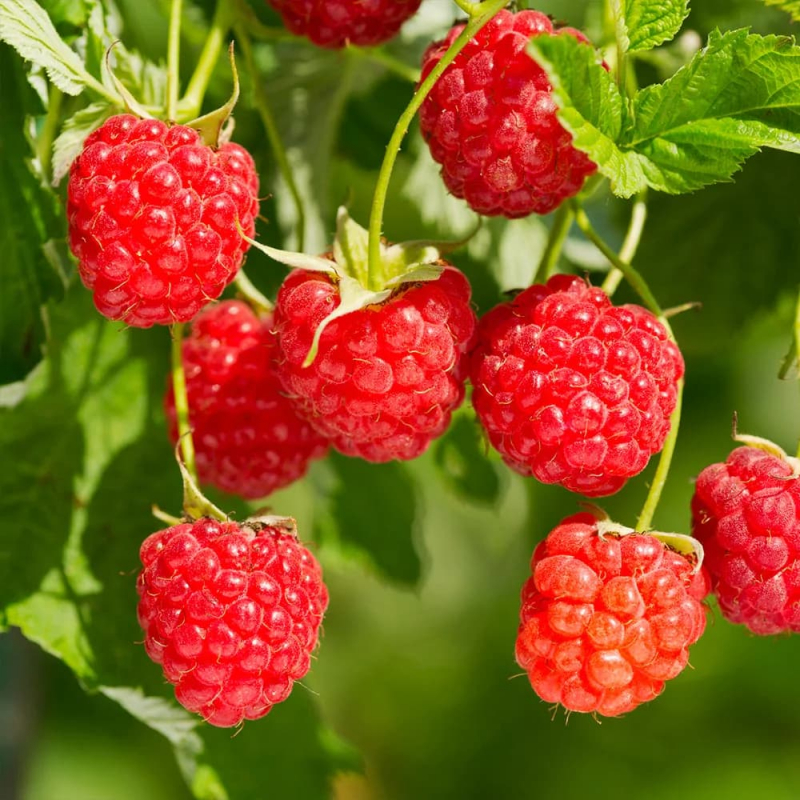
BrighterBlooms.com -
A cherry is the fruit of many plants of the genus Prunus and is a fleshy drupe (stone fruit). Cherry trees, like the majority of temperate-latitude trees, need a specific number of chilling hours each year to break dormancy, bloom and produce fruit. The variety determines how long the food must cool. None of the trees in the genus Prunus can grow in tropical regions due to this need for cold weather. Cherries may be grown in most temperate climates and have a brief growing season.
Raw sweet cherries are 82% water, 16% carbohydrates, 1% protein, and negligible in fat. The cherry kernels contain amygdalin, a substance that, when consumed, causes the release of the poisonous substance hydrogen cyanide. They can be accessed by biting or cracking the hard-shelled cherry pits. Each cherry has a different amount of amygdalin, thus symptoms wouldn't appear until you ate numerous crushed pits (3-4 of the Morello variety or 7-9 of the red or black varieties). Normally, swallowing the whole of the pit has no negative effects. According to an experiment on the cyanide content of cherries, a typical cherry pit has 0.004 mg of cyanide, which is not a lethal dose for humans but should still be avoided because different cherry varieties may have higher cyanide content levels.
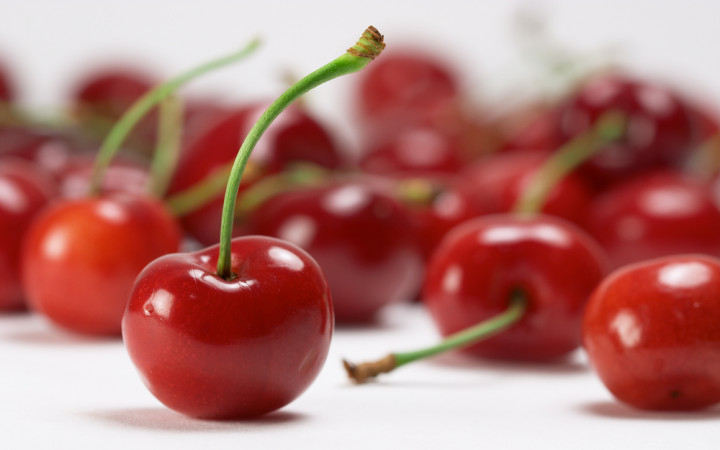
Wonderopolis 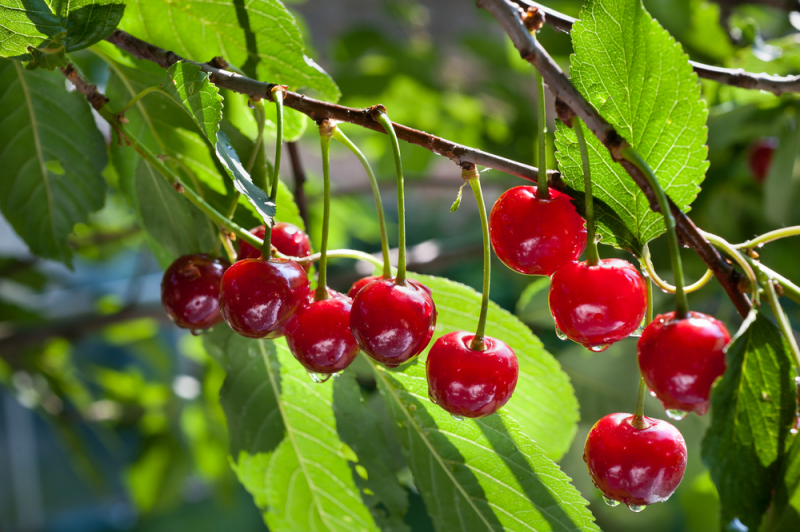
The English Garden -
Rambutan is a medium-sized tropical tree in the family of Sapindaceae. The name also refers to the edible fruit produced by this tree. The rambutan is native to Southeast Asia. It is closely related to several other edible tropical fruits including the lychee, longan, pulasan, and guinep. The fruit is an oval to round, single-seeded drupe that is 10–20 together in a loose pendant cluster, and it is 3-6 cm long (occasionally up to 8 cm long) and 3–4 cm wide. The name, which translates to "hairs", refers to the leathery skin, which is reddish (occasionally orange or yellow) and covered in fleshy, elastic spines. The fruit's spines commonly referred to as "spinterns", aid in transpiration, which may have an impact on the fruit's quality.
The rambutan fruit is primarily composed of water, 21% carbs, 1% protein, and very little fat. The canned fruit has 82 calories per 100 grams of reference weight and only moderate amounts of manganese (16% of the Daily Value) in terms of nutrition. The level of other micronutrients is low. The pleasant fragrance of rambutan fruit derives from numerous volatile organic compounds, including beta-damascenone, vanillin, phenylacetic acid, and cinnamic acid.
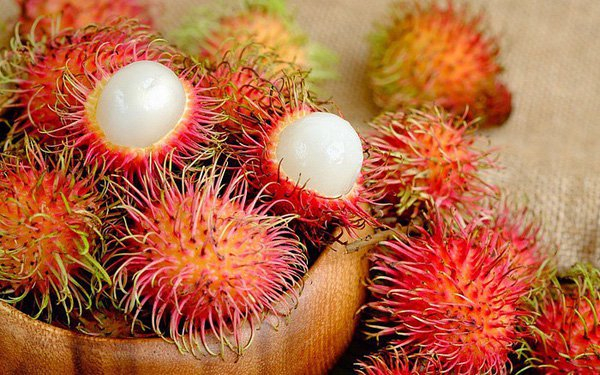
Vinmec 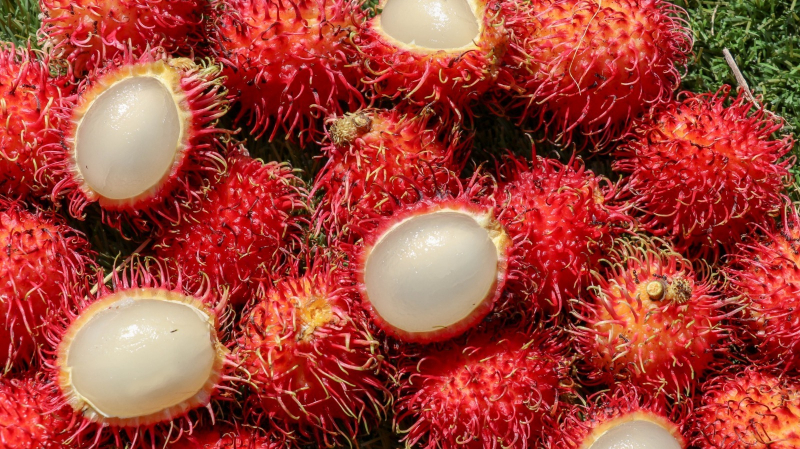
Mashed -
The pomegranate (Punica granatum) is a fruit-bearing deciduous shrub in the family Lythraceae, subfamily Punicoideae. The pomegranate was originally described throughout the Mediterranean region. It was introduced into Spanish America in the late 16th century and into California by Spanish settlers in 1769. The Middle East and Caucasus region, north and tropical Africa, Iran, Armenia, the Indian subcontinent, Central Asia, the drier regions of Southeast Asia, and the Mediterranean Basin are all home to extensive pomegranate cultivation.
The pomegranate is a 5 to 10-m tall shrub or small tree with many spiny branches. It has a long lifespan, with some specimens in France living for 200 years. The leaves of P. granatum are 3-7 cm long, 2 cm wide, shiny, narrowly rectangular, and whole. The flowers have three to seven petals, are bright red, and have a diameter of 3 cm. Some unproductive cultivars are bred just for their flowers. The pomegranate fruit husk, which is reddish-purple in color, is made up of two layers: an outer, hard pericarp and an interior, spongy mesocarp (white "albedo"), which makes up the inner wall of the fruit to which the seeds are attached. A pomegranate can contain anything from 200 to 1,400 seeds.
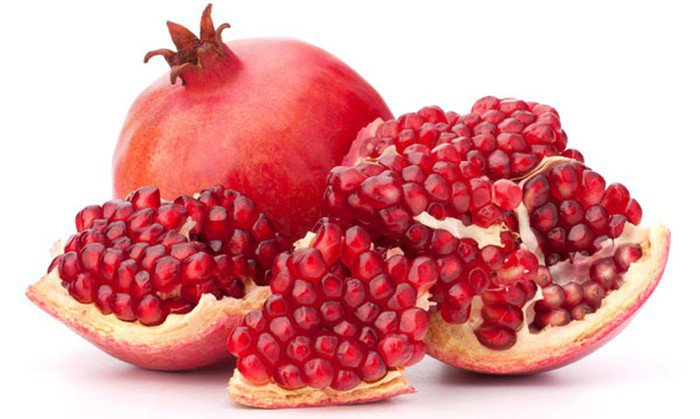
Vinmec 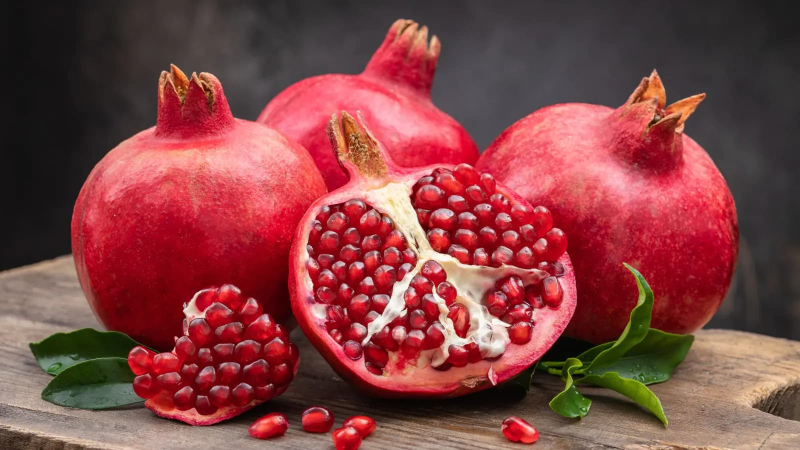
Healthshots -
Water apple, also known as watery rose apple or simply, rose apple, that goes with the scientific name Syzygium aqueum, is native to South East Asian countries and to certain tropical regions of India. Commonly referred to as "Chambakka" or “Pani Seb” in Hindi, “Jambu” or “Panneer Naval” in Tamil, “Jambakka” in Malayalam, and “Gulaabijamichettu” or “Gulaabijamikaayalu” in Telugu, this succulent, delicious fruit is popular for its thirst-quenching properties.
Despite having the widespread name "rose apple" and having an exterior that resembles an elongated apple, these nutrient-rich fruits have no resemblance to roses or apples in terms of flavor, aroma, or texture. When ripe, these delicious water apple fruits taste extremely sweet and have an inherently crunchy feel. However, because of its distinctively astringent flavor, the unripe green water apple is perfect for use in pickles, curries, and chutneys. Due to its low caloric and saturated fat content, the water apple fruit is excellent for weight loss. Additionally, it contains dietary fibers to aid with digestion and is cholesterol-free for improved heart health. The antioxidant vitamin C and the vitamin A required for healthy vision are both abundant in water apples. They are also rich in B vitamins, which can help control metabolism.
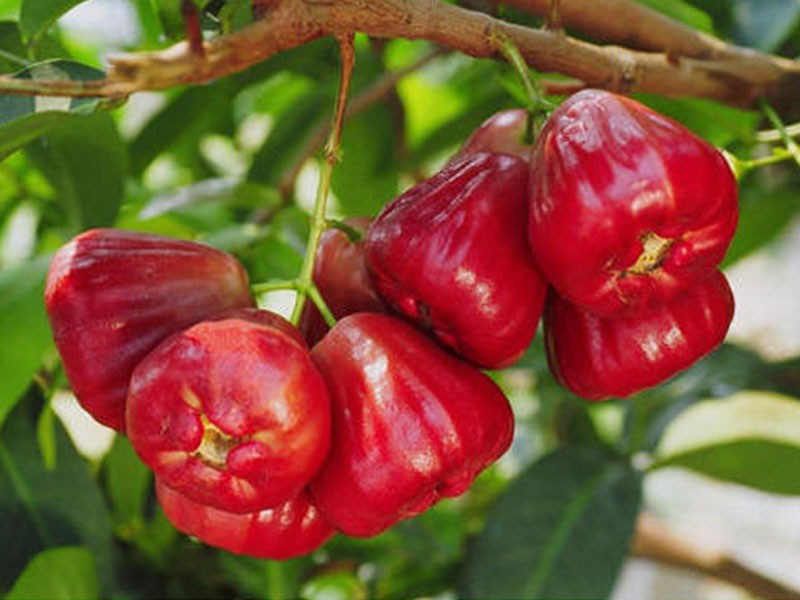
Nature Nursery 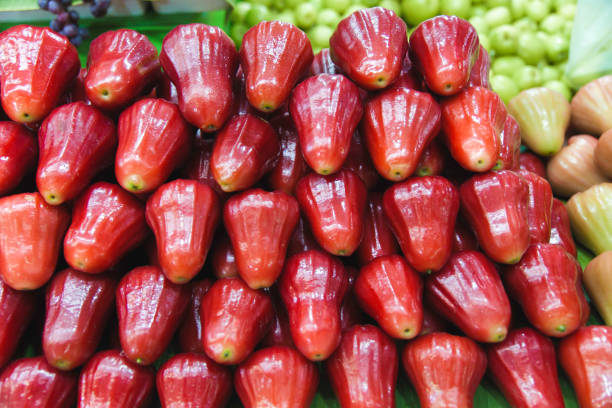
iStock -
Lychee is a monotypic taxon and the sole member in the genus Litchi in the soapberry family, Sapindaceae. It is a tropical tree native to the Guangdong, Fujian, and Yunnan provinces of Southeast and Southwest China, where cultivation is documented since the 11th century. China is the main producer of lychees, followed by India, other countries in Southeast Asia, the Indian Subcontinent, Madagascar, and South Africa.
The lychee produces fleshy fruits that, depending on the environment, cultivar, and location, mature in 80–112 days. Fruits can be up to 5 cm long and 4 cm wide, have a variety of shapes, including round, ovoid, and heart-shaped, and weigh about 20 g. The thin, tight skin is smooth or covered in tiny, pointy protuberances that have a harsh texture, and it is green when juvenile before ripening to red or pink-red. The layer of translucent white fleshy aril with a floral scent and a sweet flavor is visible once the inedible rind has been removed. Raw lychee fruit is 69% water, 17% carbohydrates, 1% protein, and contains negligible fat. The raw pulp is rich in vitamin C, having 72 mg per 100 grams – an amount representing 86% of the Daily Value – but contains no other micronutrients in significant content.
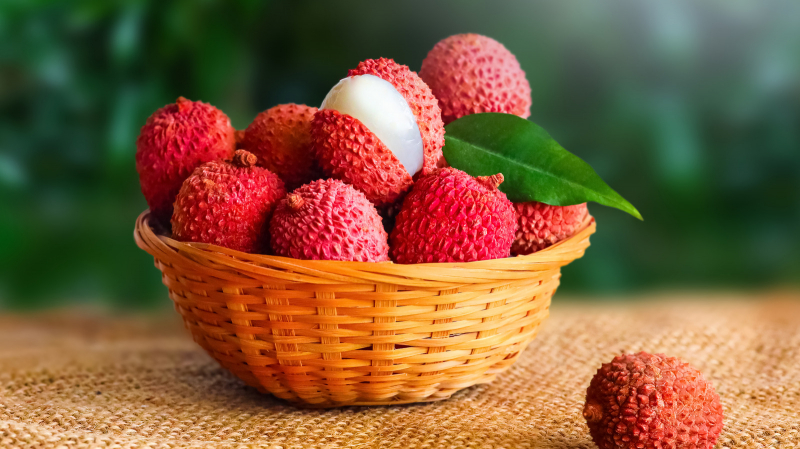
Tasting Table 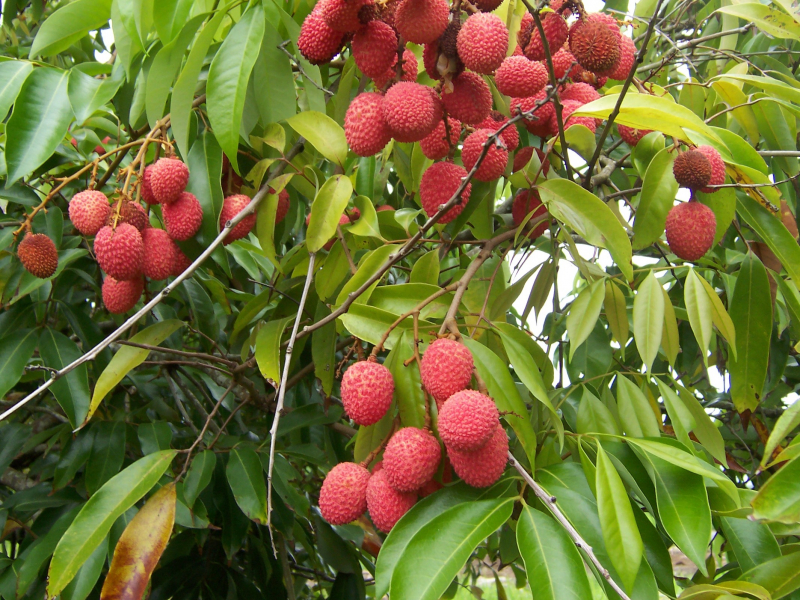
Wikipedia -
Watermelon (Citrullus lanatus) is a flowering plant species of the Cucurbitaceae family and the name of its edible fruit. A scrambling and trailing vine-like plant, it is a highly cultivated fruit worldwide, with more than 1,000 varieties. The closest relatives and potential ancestors of modern, cultivated watermelons are the Sudanese Kordofan melons. In Uan Muhuggiag, an ancient site in Libya that dates to around 3500 BC, wild watermelon seeds were discovered. Although they were not the delicious modern kind, watermelons were domesticated in north-east Africa and were being grown in Egypt by the year 2000 BC. During the Roman era, sweet dessert watermelons spread throughout the Mediterranean region.
For its enormous edible fruit, which is a berry with a hard rind and no internal divisions, watermelon is produced inhospitable conditions from tropical to temperate regions all over the world. This fruit is known botanically as a pepo. Although there are kinds without seeds, the sweet, juicy flesh is typically deep crimson to pink and contains many black seeds. it is 91% water, contains 6% sugar, and is low in fat. The fruit can be consumed fresh, pickled, or cooked, and the rind can also be consumed. Additionally, it can be drunk as juice or a component of mixed drinks.
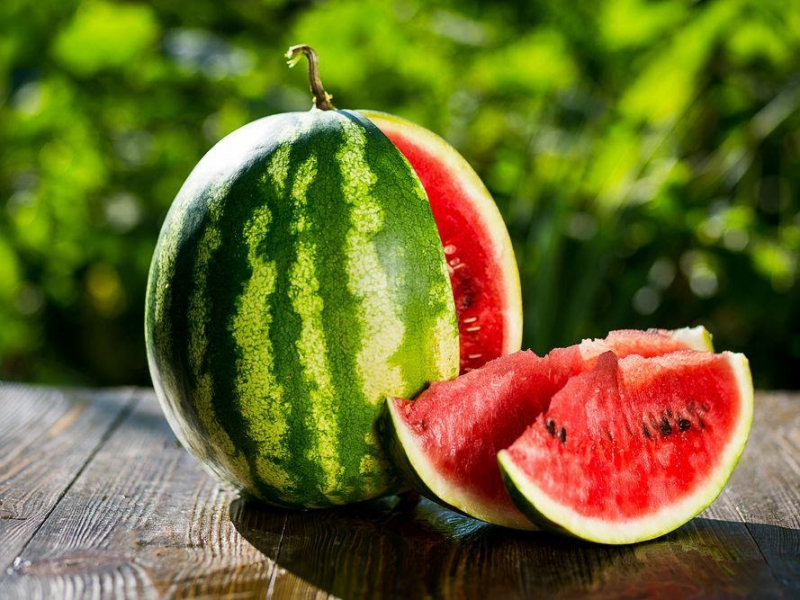
iStock 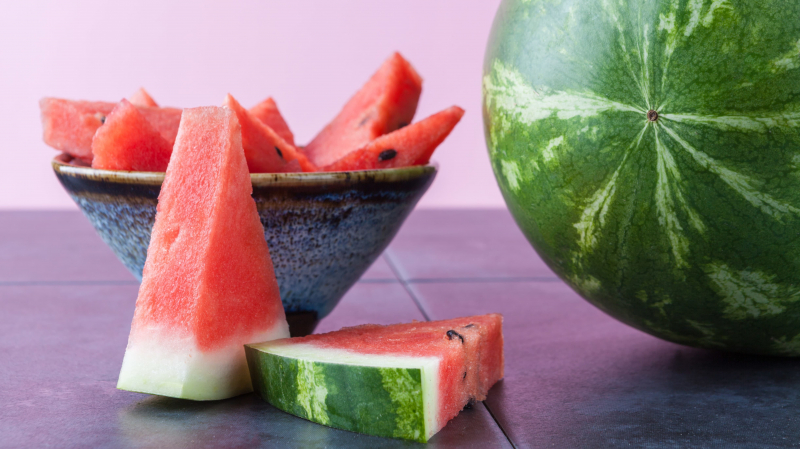
Live Science -
The redcurrant or red currant (Ribes rubrum) is a member of the genus Ribes in the gooseberry family. It is native to western Europe. The species is widely cultivated and has escaped into the wild in many regions. There are several other similar species natives in Europe, Asia, and North America, also with edible fruit. These include Ribes spicatum (northern Europe and northern Asia), Ribes alpinum (northern Europe), R. schlechtendalii (northeast Europe), R. multiflorum (southeast Europe), R. petraeum (southwest Europe), and R. triste (North America; Newfoundland to Alaska and southward in mountains).
A deciduous shrub with five-lobed leaves spirally arranged on the stems, Ribes rubrum typically reaches heights of 1 to 1.5 meters, but can occasionally reach 2 meters. Unnoticeable yellow-green blooms grow in pendulous racemes that are 4 to 8 centimeters long. The flowers mature into bright red translucent edible berries that have an 8 to 12-millimeter diameter and 3 to 10 berries per raceme. From mid-to-late summer, an established bush can produce 3 - 4 kg of berries. In a 100-gram reference serving, redcurrants (or white) supply 234 kilojoules (56 kilocalories) of food energy and are a rich source of vitamin C, providing 49% of the Daily Value. Vitamin K is the only other essential nutrient in significant content at 10% of DV.
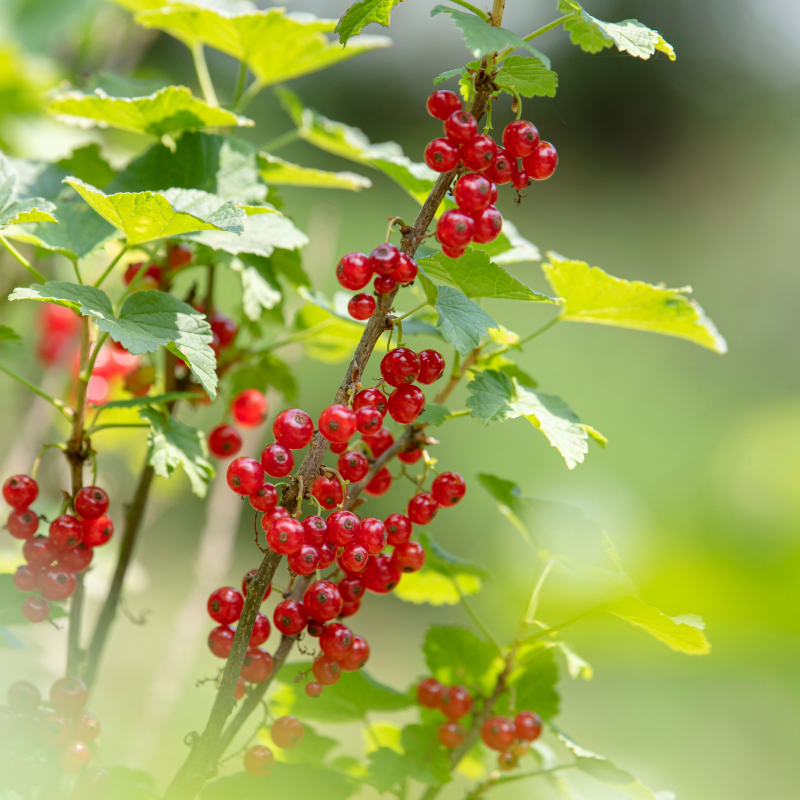
The Spruce 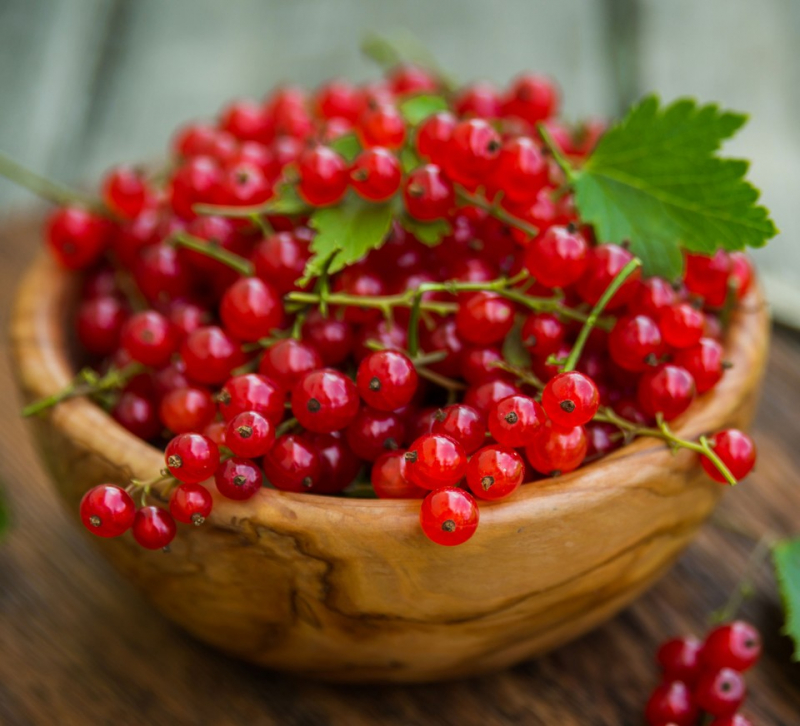
BBC Good Food -
The blood orange is a variety of orange (Citrus × Sinensis) (also referred to as raspberry orange) with crimson, almost blood-colored flesh. The presence of anthocyanins, a class of polyphenol pigments prevalent in many flowers and fruit but unusual in citrus fruits, is what gives these fruits their distinctive black flesh color. The primary substance present in red oranges is the chrysanthemum, also known as cyanidin 3-O-glucoside. When the fruit ripens at low temperatures during the night, the flesh takes on its distinctive crimson hue. Depending on the blood orange variety, dark pigmentation can occasionally be noticed on the rinds outside. The skin of some oranges can be rougher and more difficult to peel than other oranges. In contrast to other oranges, blood oranges have a distinct raspberry-like flavor in addition to the regular citrus characteristics.
Raw blood oranges are a rich source (20% or greater of the Daily Value, DV) of vitamin C and dietary fiber, and a moderate source of folate (15% DV), with no other micronutrients in significant content. Some blood orange juice may be a little tart, while other varieties are sweet while still tasting like blood oranges. The zest from the oranges can be used in baking, and the oranges can also be utilized to make marmalade. Sliced blood oranges, bulb fennel, and olive oil are the main ingredients in a common Sicilian winter salad. The oranges have also been used to make Italian soda, sorbet, and gelato.
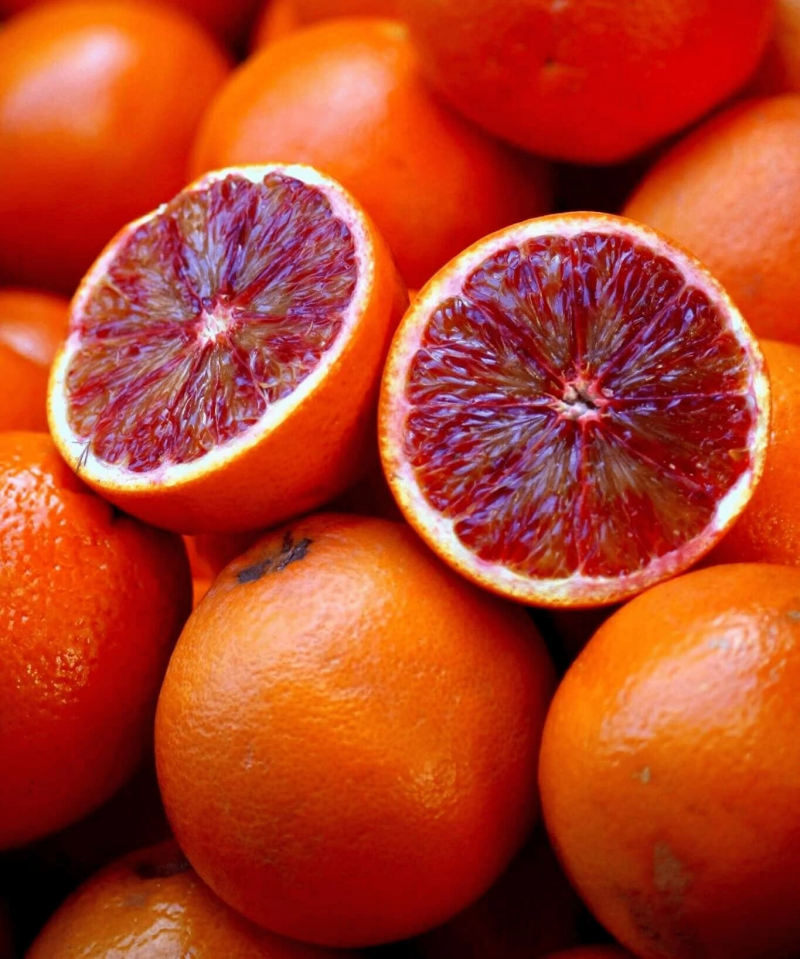
iStock 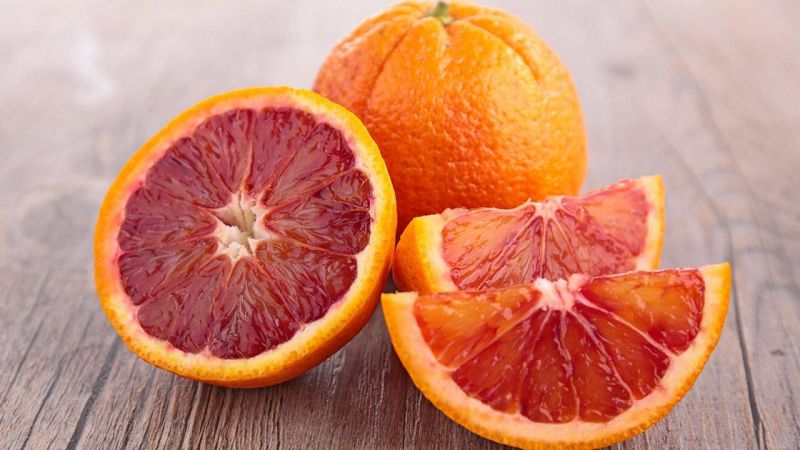
MICHELIN Guide - The Michelin Group












